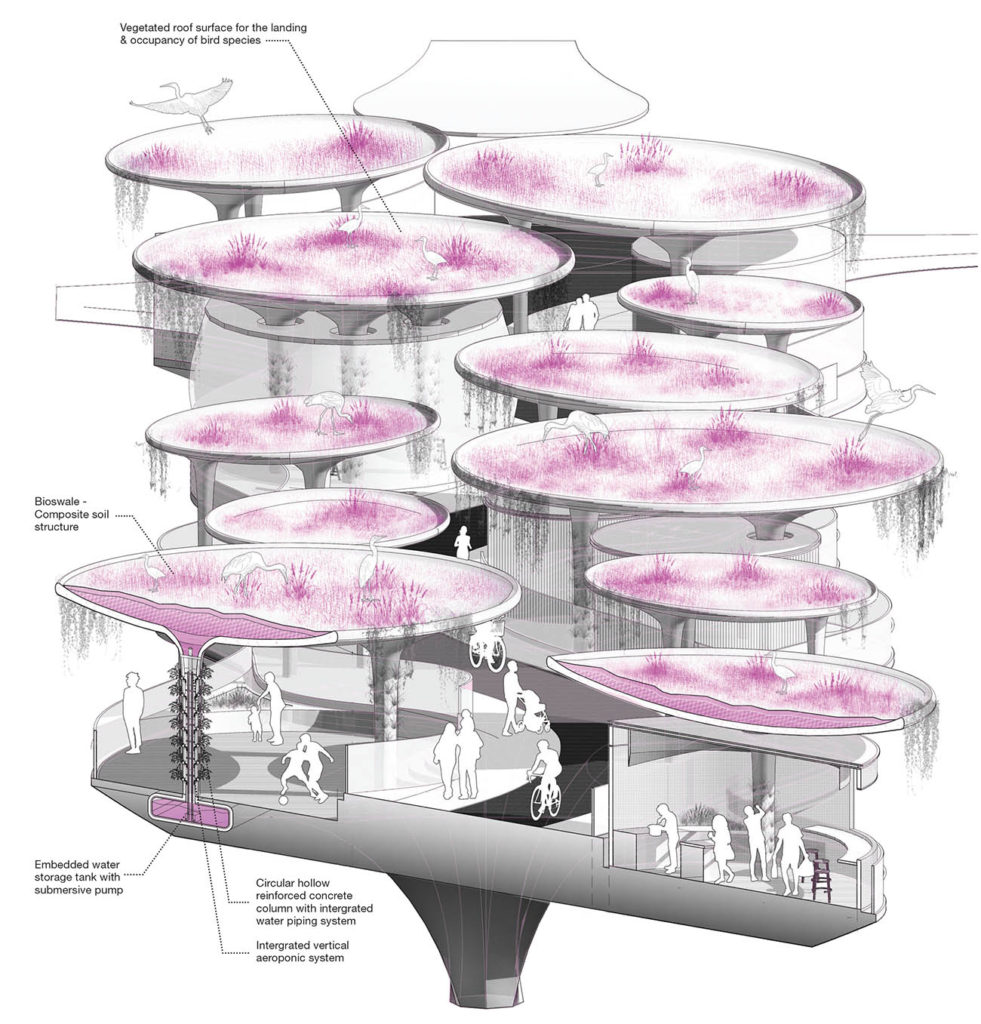Diabetic Care Hub: A futuristic idea of using nature to heal & manage diabetes
June 15, 2022
What if bees and leeches could help manage diabetes?
This was an unusual proposition that certainly grabs one’s attention. The bigger question is how does this relate to architecture, or more directly, healthcare-related architecture?
The students behind this ambitious project researched on several aspects of alternative therapies—some of which involved insects—and posited a future hub model that could bring these healthcare solutions, created with advanced, novel technologies, to the common person, via an urban plugin set-up that integrates with existing blue-green infrastructure. The team proposed to deliver these healthcare technologies accessibly by plugging into Singapore’s already existing and expanding island-wide Park Connector Network.
WHY DIABETES?
The team presented that by 2050, one in two adults in Singapore will be diagnosed with Type 2 Diabetes1. Affecting more than 468 million people worldwide, it is becoming one of the fastest-growing health challenges of the 21st century. A chronic disease that could lead to many specialised healthcare complications, it is said to have seen an exponential increase over the past three decades, affecting countries of all income levels.
WHAT DOES THE DIABETIC CARE HUB MODEL CONSIST OF?

“The project’s move towards the exploration of alternative treatments was first inspired by research done on utilising maggots for diabetic foot ulcer treatments. From there, we were motivated to further explore the realms of utilising insects/nature as a potential means of how diabetic management could be approached. Precedent research was from the current technology of harvesting bee venom by using electricity flowing through a glass plate. Therefore, adopting the current approach, we conceptualised a more complete cycle of bee production, venom collection and patient application in each apitherapy architecture.”
INTEGRATING THE MODEL WITH NATURE-BASED INFRASTRUCTURE

Building on the 2030 Green Plan and the push towards a ‘car-lite’ future, the students proposed an urban intervention that not only serves to transform and develop marginalised spaces into emblems of convenient and sustainable health, but this newly distributed model also aims to establish a collective island-wide interconnected healing ecosystem that integrates health into everyday lives.
The Diabetic Care Hub is a project by Joanne Wong Jinn Yi, Sharmaine Lee Pui Fong, Prasanth Kumaar Kunasilan and Chin Kar Fai, students at the National University of Singapore (NUS). It was part of an exhibition done by the students of the Division of Industrial Design and Department of Architecture. Look out for award-winning students’ ideas in the next FuturArc Green Awards 2022 issue.
[This is an excerpt. Subscribe to the digital edition or hardcopy to read the complete article.]
1 “1 In 2 S’porean Adults Will Have Type 2 Diabetes By 2050”. 2021. Asiaone. https://www.asiaone.com/health/1-2-sporean-adults-will-have-type-2-diabetes-2050.
2 https://pubmed.ncbi.nlm.nih.gov/26049635/

Read more stories from FuturArc 2Q 2022: New & Re-Emerging Architecture!

To read the complete article, get your hardcopy at our online shop/newsstands/major bookstores; subscribe to FuturArc or download the FuturArc App to read the issues.

